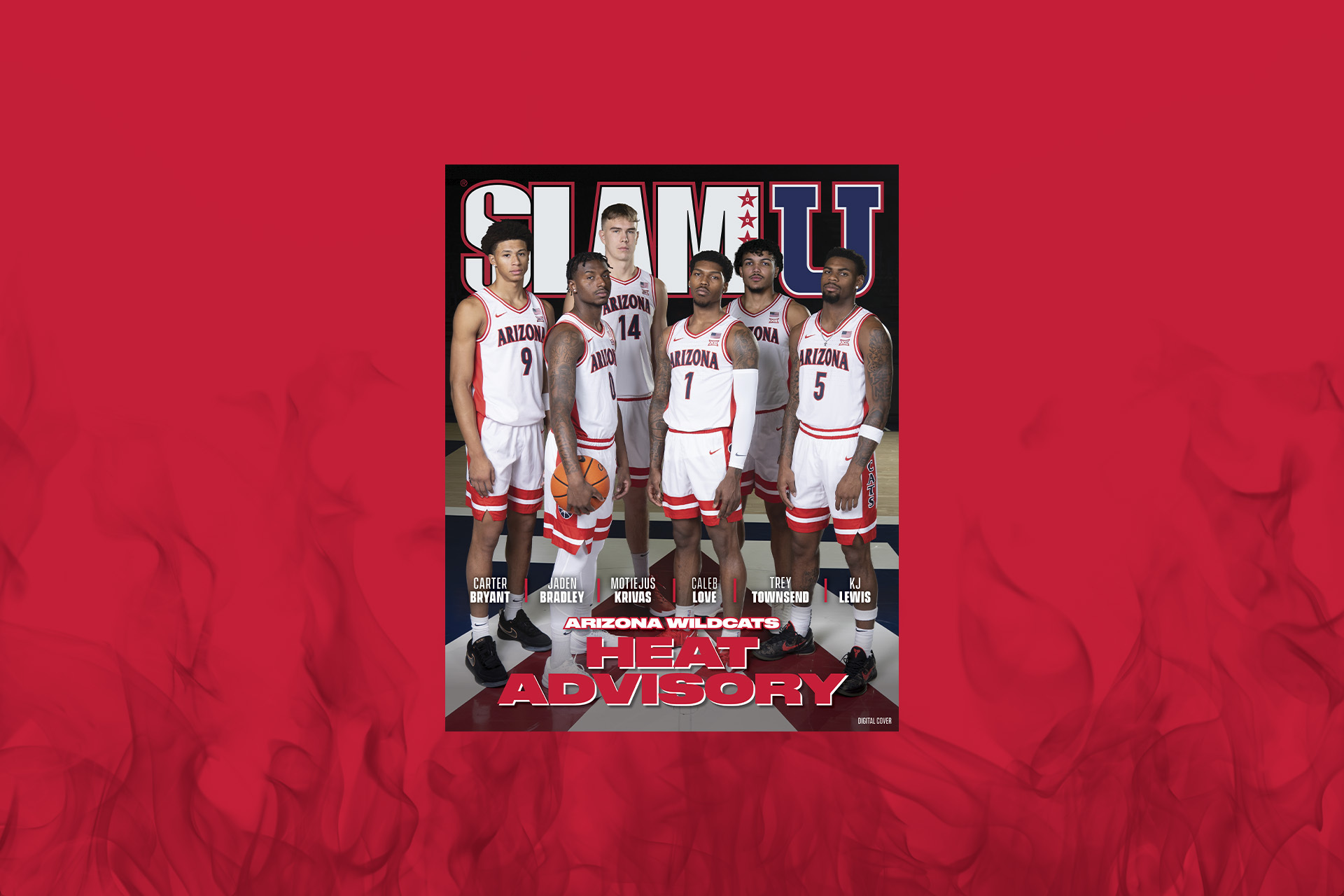The Boston Celtics are littered with elite three-level scorers on their roster. They can attack you in many ways and find gaps in any defense thrown their way. With the Celtics set to face a Dallas Mavericks team that struggles to guard the perimeter in terms of impacting shots, it makes sense that Joe Mazzulla’s team could lean into some sets that have worked well throughout the season.
Stampede cuts
If the Celtics are going to draw a crowd on the perimeter, they should look to punish the additional space with forceful cuts toward the rim. Dallas has been using Kyrie Irving in a similar spot and did so to end the first quarter of Game 4.
If the Celtics are going to lean into attacking via stampede cuts, Jaylen Brown is the most likely candidate due to his explosiveness and how much he seems to enjoy bully driving his way to the rim.
Above is a good example of how you can generate rim pressure without relying on perimeter-based actions. We all know the Celtics will draw a crowd when running PnR sets with Jayson Tatum or Brown as the ball-handler. But what happens when the defense is set in the half-court and both forwards are operating off the ball?
In this clip, the Celtics get Tatum out of the dunker spot and onto the perimeter via a Zipper Cut. On the weak side of the floor, Sam Hauser sets a wide pin-down for Brown, who curls over the screen and stampede cuts after receiving the pass. Notice how Hauser lifts out of the corner as the defense collapses to offer a passing outlet for an easy three.
By leaning into stampede actions, the Celtics will be testing the Mavericks’ ability to protect the rim while also testing their reactivity on the perimeter. It’s a good way of punishing the defense for trying to load up on the ball-handler while also finding easy scoring opportunities that come with the chance of drawing a foul.
If the defense adjusts and looks to kill the drive, both Brown and Tatum are adept at countering by pulling up in the mid-range. As we’ve seen, the Mavericks are willing to live with that shot, and don’t have a good track record of impacting them at a consistent rate.
Horns sets
Another way to leverage the Celtics’ three-level scoring is to lean into a series they’ve run all year: Horns. Mazzulla has a deep playbook out of this alignment, all of which can lead to scoring opportunities across the floor. The most prevalent option is chin, which has been a staple all season but has rarely been leaned on during the postseason.
The clip above is the basic chin set. It starts in a Horns alignment. The ball-handler feeds one of the players on the elbow before coming off a screen from the other player and cutting on the non-ball side of the floor. That action usually opens up an easy lane to the rim.
Of course, if the defense reacts quickly, the cutter can turn into a short-roll creator in seconds, using the gravity of his cut to hit an open shooter in the corner.
If the cutter isn’t in a position to receive the pass due to the defense reading the action, the screener can flow into a veer action to open up a chin veer which gives the ball-handler an opportunity to get downhill as the defense recovers from initial rotation on the entry cut.
The potential outcomes from this play are the same as running Chin. The primary difference is the pressure it puts on the cutter’s defender if they’ve been sold on the screen and have attempted to go under or to try and cancel the screen, which, as you can see in the clip above, can generate some additional space.
One variance with the UCLA action that Boston has liked to deploy at times this season is having the UCLA screener pop into space around the slot. The cut then acts as the decoy, while the real action is getting a shooter popping into space while the defense reacts to the threat of the cut.
Stack actions: A.K.A Spain Pick-and-Roll
I’ll keep this section short.
Last season, the stack was a primary part of Mazzulla’s offensive playbook. This season, it’s been less prevalent, and when the Celtics have gone to it, it’s been designed as window dressing before the real action took place. However, given the Mavericks’ desire to defend the perimeter, leaning into some stack actions could be a good ploy to generate some easy looks.
Hauser is usually the beneficiary of these actions. It makes sense given his elite catch-and-shoot threat. However, Payton Pritchard, Brown, Tatum and Porzingis all make sense in this spot, especially if you feel like the popper (Hauser in the clip above) may need to take a 1 or 2 dribble pull-up to attack a closeout.
Still, if you’re looking to create space on the perimeter and lean into your identity as a fearsome three-point team, running stack against a defense that struggles to impact the perimeter could be a wise bet.
I am expecting to see more actions than the ones laid out here. However, these actions have worked against questionable perimeter defenses all season and feel like logical options heading into the series against Dallas. Of course, things could change. Adjustments are part and parcel of the playoffs, and that includes moving away or toward different parts of your playbook.
Nevertheless, I’m excited to see how the chess battle unfolds and whether Mazzulla has been holding anything back for this late stage of the playoffs.
CelticsBlog graciously allowed this article to be cross-posted from my “Celtics Chronicle” newsletter.






